Inventing Pasts and Futures: Speculative Design and Media Archaeology
I wrote a paper some years ago on media archaeology (esp. imaginary media research) and speculative design, to put the two parallel fields in closer dialogue. The text will be featured in a book that is still in preparation and because the first version was written some three-four years ago, I thought at least to add a couple of the first lines online. This is still the version that is not copy edited, but hopefully out one day too! Here’s the start. For the full draft version, please get in touch.
Inventing Pasts and Futures: Speculative Design and Media Archaeology
- Introduction: Imaginary Media as Impossible Yet Necessary Techniques
To be able to start with the non-existent, sometimes even the absurd, is a skill in itself. It can be a methodological way of approaching reality not as ready and finished but produced and open to further variations, potential and a temporality that includes the possibility of something else. Like with all methods, the skill of thinking the non-existent needs practicing. It also needs institutional contexts that are able to support such an odd task that seems devoid of actual truth value and easily dismissed as not incorporating the epistemological seriousness required of the academic subjects. Despite the difficulty of giving a good one-liner definition that could cover all aspects of different traditions of media archaeology, it is safe to say that it has been able to create an identity as a field interested in the speculative. This has meant many things from mobilisation of media history executed by way of surprising connections across art, design, technology and architecture to acknowledging the unacknowledged, a sort of a search and rescue-operation for devices, stories, narratives, uses and misuses left out of the earlier registry. Archaeology has been sometimes used as a general term for the way in which we investigate the conditions of existence of media culture, and the media technical conditions of existence of cultural practices – two things that are closely connected, with the two aspects in co-determining relations: media technology and cultural practices. And it also bends our notions of history and time itself. As Thomas Elsaesser (2016, p. 201) puts it, it is a symptom of a very different sort of a relation to the past: ‘on the one hand, it suggests a freeing up of historical inevitability in favour of a database logic, and on the other hand, it turns the past into a self-service counter for all manner of appropriations.’
Already, early on, imaginary media was one part of the media archaeological body of research. It had the clear aim of reminding scholars and artists that media technological reality was not to be restricted to what actually is. It was not to be contained by the histories of technological achievement but meant to relate to the broader cultural and artistic history, which technology can be imagined, and where it returns as imaginary attachments to values, affects, aspirations and dreams. Eric Kluitenberg (2011) articulates that such shifts are sometimes almost as if seamless, something rather prescient in the marketing discourses of digital culture. We feel constantly even emotionally attached to dream devices of corporations, carefully framed by their sales pitches as part of a wider infrastructure of desire. While such an attachment is odd enough, broadly speaking the discourses of imaginary connections constitute also our cultural topoi (Huhtamo 2011a), which then become the environment for recursive dreaming that characterizes consumer culture and production of reality.
But how boring it would be to restrict oneself to what is actual. A variantology of imaginary media, as Kluitenberg puts it (2011, p. 57) can reach out to theological discourses, aliens and the dead, to things untrue and yet so impactful for any account of cultural history. Such imaginations are ways to rethink the usual coordinates of time and space – the time of not merely a past-that-was, but a past-that-could-have been; a future imagined as one recurring fantasy of rejigging the time we are in now. These are the places that are not only distant but sometimes impossible. How liberating this feels instead of buying into the ready-made dreams. No wonder such strategies can be connected to a wider political imaginary that includes geographical, racialized and gendered others. Artists such as Zoe Beloff have set scenes for alternative media histories through the silent mediums themselves – female protagonists, written into the stories. Kluitenberg points to afrofuturism as one particularly interesting political imaginary. Indeed, as the director John Akomfrah puts it in an interview with Kluitenberg, afrofuturism and other imaginary media practices are not mere mental refuge. They produce and sustain new cultural practices and spaces in which black science fiction carves its own collective existence but also facilitates relations with, for example, gay and women’s movement including in the science fiction of Octavia Butler and Samuel Delaney. What is being approached is a black techno-cultural imagination where also music plays a key role in how pasts, presents, and futures co-determine each other in new ways: ‘Black science-fiction culture, especially music, figures the past in the present by matching the quest for ‘outer’ space with new journals into the inner “technological tape” space of black sound itself via the digital utopias of jungle and techno.’ (Kluitenberg and Akomfrah 2006, p. 293). Even if also imaginary media is at times defined as ‘untimely’ (Zielinski 2006, p. 30; Kluitenberg 2011, p. 56-57), it remains actually an interesting situated practice that is aware of geographies and can challenge the Eurocentric focus of some of the speculative design discourse and practice. Hence, the more interesting of such fabulations actually become ways to imagined situated critiques by way of imaginary. In some recent work, afrofuturism has also been connected to issues of cultural heritage as a project between speculative futures and records of the past (see Nowviskie 2016).
So what does it mean to think of media archaeological and imaginary media projects in the context of speculative design? The question itself acts as a conceptual probe that searches for specific practices in both media and design. Furthermore, it is also a probe that scans the disciplinary relations of two sets of discourses about the past and the future. As two parallel fields with not much contact in the past, speculative design and imaginary media research are interested in how alternative worlds might be created and how temporal, social, and technological fabulations situate coordinates of past-future in alternative ways. I will discuss different art and design projects, cross-fertilising the two traditions of media and design theory and practice, and aim to elaborate ways how media archaeology could contribute to speculative design and to some contemporary issues in critical design. There are some earlier ideas that have suggested how this might work. For example Bruce Sterling’s idea of ‘paleo-futures’ as ‘the reserve of historical ideas, visions and projections of the future—a historical futurity of that prospective’ (Hales 2013, p. 7) is one example of the shared suitably complex time-scales of overlapping design and media archaeological imaginations, but this chapter teases out further contexts for such reserves of historical ideas.




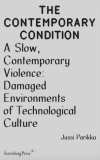





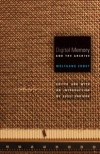
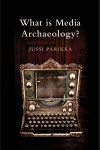

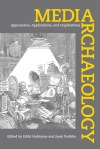

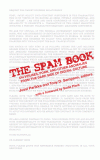
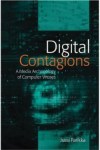
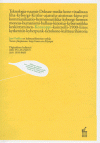
I’d like to see the rest, thanks, Dirk
happy to send the text if you email me